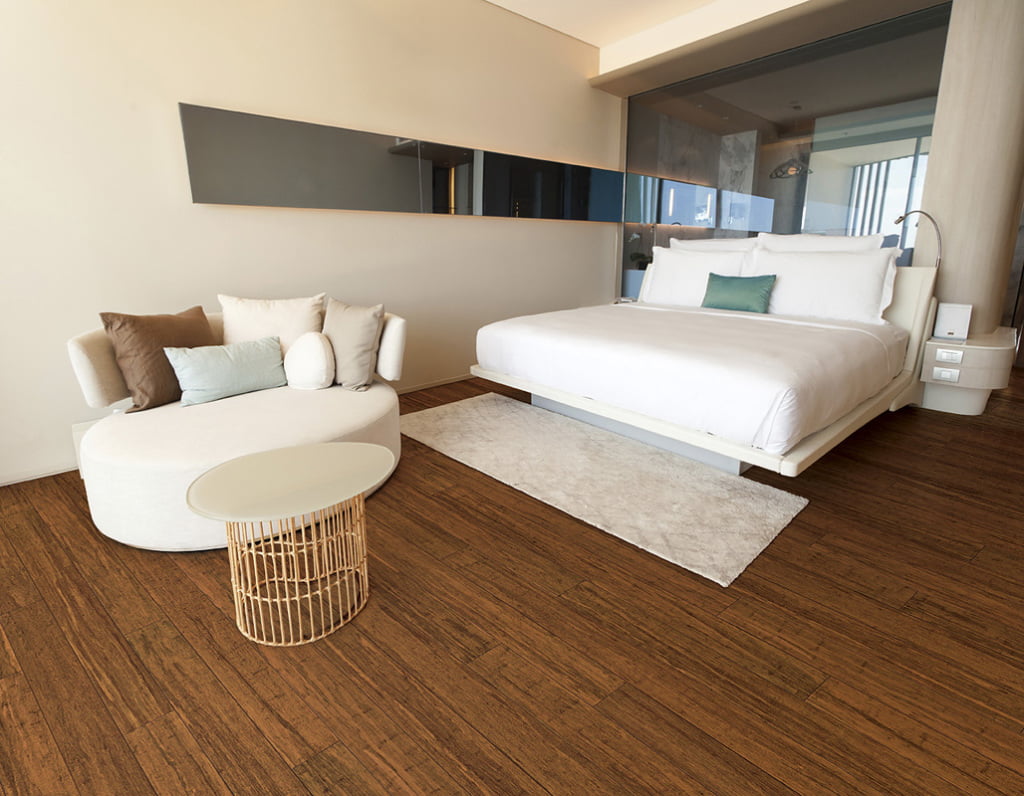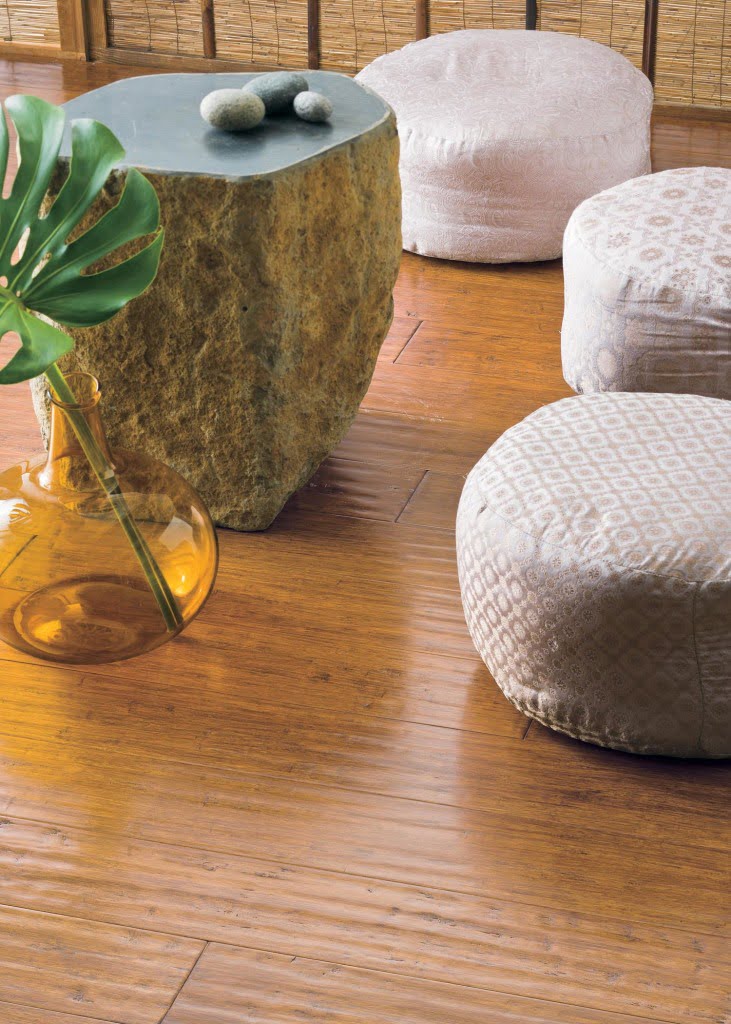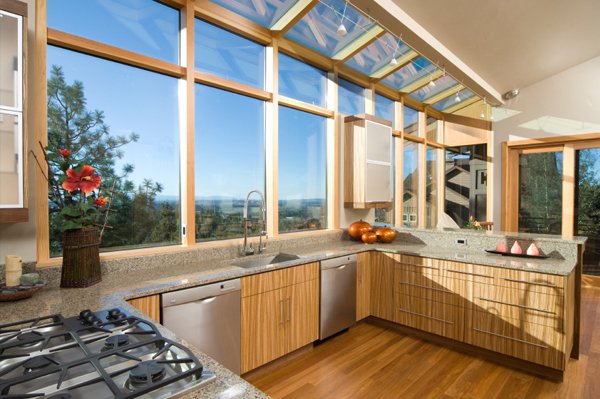Bamboo Flooring pros cons Tips on Styling a Space with a Bamboo Floor put here in my list. Because, there are some reasons for latest industrial treads consideration on flooring material. This type of flooring is becoming more and more popular, due to a variety of reasons we’ll discuss below. Read this article to find out what Bamboo Flooring pros cons, and a few tips on styling a space with a bamboo floor. You may decide that bamboo floors are your next best friend!
Let’s talk Bamboo Flooring pros cons, shall we? It might sound exotic and, frankly, a little intimidating if you’re not sure what, exactly, bamboo is and how, exactly, it would work as a floor.
WHAT IS BAMBOO FLOORING PROS CONS?
Just like its name indicates, bamboo flooring is a type of flooring that’s manufactured from the bamboo plant. The most common bamboo variety used for flooring is called Moso bamboo. Most bamboo flooring products come from China and other parts of Asia. Bamboo has become a popular alternative to hardwood flooring, due to its physical similarities to wood (discussed below).
The plant itself (bamboo is a grass) grows faster – to maturity in five years – than trees, which makes it a highly renewable flooring option as well. (Note: It should be noted that this is a controversial topic, as some people in the industry feel that bamboo harvesting is resulting in deforestation…kind of a Catch-22 for the bamboo/hardwood flooring debate.)
Before we go to Bamboo Flooring pros cons, we need to some info about bamboo flooring.
ALL BAMBOO FLOORING THE SAME?
No. Different methods of manufacturing bamboo create different end flooring results, based largely on economic viability and local preferences. In southeast Asia, bamboo is cut into very thin strips and nailed to larger pieces of bamboo, leaving small spaces/gaps between each strand of bamboo, often to help circulation. Flatness and tightness is not emphasized.
Conversely, the bamboo flooring more commonly found in North America is highly processed, including slicing, removing the outer skins and nodes, removing starches and sugars, drying and planning, then laminating.
WHAT ARE THE BENEFITS OF USING BAMBOO FLOORING?
- Eco-friendly material.
In the emphasis on being “green” across the globe today, bamboo is a popular flooring choice because of the bamboo plant’s ability to grow rapidly. Thus, bamboo materials for flooring is not as in short supply as many view hardwood to be.
- Similar appearance to hardwood.
Bamboo flooring looks very like hardwood, providing a nice, warm, natural feel. Bamboo can be stained, just like hardwood, to be nearly any shade or color one wants. The coloring and “graining” of bamboo flooring, laid out in strips, can sometimes be mistaken for hardwood.
- Easy to install.
Locking bamboo flooring is quite easy to install (although not all bamboo flooring is of the locking variety). Individual floor planks interlock and click into place. The end. Sounds pretty easy, right?
- Strong and durable.
While traditional bamboo flooring has a hardness level (as determined by Janka hardness testing) similar to red and white oak, new manufacturing techniques such as strand-woven bamboo flooring increase the Janka ratings (hardness) to well beyond hickory and Brazilian Cherry, which are two of the hardest hardwoods.
- Resistant to insects and moisture.
Bamboo is a good flooring option for climates where insects and moisture must be consider. The floor, when acclimated and installed correctly, is less likely to warp or shrink than hardwoods might be.
WHAT ARE THE DISADVANTAGES TO USING BAMBOO FLOORING?
- Requires maintenance.
Similar to the upkeep required by hardwood floors, bamboo flooring requires care and attention. Dry or barely damp mops are best, excess water should be avoided, and cleaning detergents must be approach with caution so they don’t damage the surface.
- Chemicals used for treating bamboo flooring surfaces.
While bamboo floors are manufacture, some manufacturers use urea-formaldehyde as the glue to bond the bamboo strips together. This is a highly toxic chemical, and much debate has ensued about the appropriateness of this chemical choice.
- Shipping bamboo worldwide leaves a high carbon footprint.
Just because the material itself is “Eco-friendly,” doesn’t mean there are no environmental impacts of using bamboo flooring. Consider the shipping resources and costs associated with transporting bamboo from China; at least one study has shown that, for a Colorado home, using local concrete for floors is a more environmentally friendly choice than bamboo, due to the carbon requirements to get the bamboo on-site.
HOW COULD I STYLE MY BAMBOO FLOOR?
- Use color-blocking elsewhere in the room.
Because bamboo floors tend to have more going on, with lots of slim strips instead of thicker slabs found with hardwood, it might be beneficial to use color blocking in the rest of the space to give some balance. Incorporating chunky slabs of furniture, such as, or repeating colors in large quantities are a few ideas for how to do this.
- Keep walls white.
Let the beautiful textural look and striations of the bamboo floor take center stage by painting walls white or a lighter shade.
- Incorporate an Asian flair.
It would make sense, since bamboo is inherently an Asian resource, that style would be an appropriate addition to a space with bamboo flooring. The Asian influence over your decor choices could be obvious, subtle, or somewhere between – whatever you are comfortable with and love. Because that’s what style is all about.
So, friends this is all about one of the most unusual flooring material with in company of nature, hope you all enjoy Bamboo Flooring pros cons Tips on Styling a Space.
Ref : guide-to-bamboo-floors, bamboo flooring pros cons, #bamboo #flooring #pros #cons.










Leave a Comment
You must be logged in to post a comment.